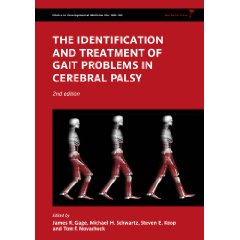Product Description
The only book to deal specifically with the treatment of gait problems in cerebral palsy, this comprehensive, multi-
disciplinary volume will be invaluable for all those working in the field of cerebral palsy and gait (neurologists,
therapists, physiatrists, orthopaedic and neurosurgeons, and bioengineers). The book is divided into two parts. The
first is designed to help the reader evaluate and understand a child with cerebral palsy. It deals with neurological
control, musculoskeletal growth, and normal gait, as well as cerebral injury, growth deformities and gait pathology in
children with cerebral palsy. The second section is a comprehensive overview of management. It emphasizes the most
fundamental concept of treatment: manage the child's neurologic dysfunction first and then address the skeletal and
muscular consequences of that dysfunction.
The book has been thoroughly updated since the previous edition, with a greater focus on treatment and several entirely
new topics covered, including chapters on the operative treatment of orthopaedic deformities.
The book is accompanied by a DVD containing a teaching video on normal gait and a CD-ROM containing the videos and
motion analysis data of all case examples used in the book, as well as teaching videos demonstrating the specifics of
many of the procedures used in the correction of gait deformities and gait modelling examples from the Department of
Bioengineering at Stanford University.
Book Description
James Gage and a range of experts who manage gait problems in cerebral palsy have combined to create this state-of-the
art resource. They examine the way the brain controls locomotion and the types of brain pathology with cerebral palsy.
Current treatment modalities and treatments of specific gait problems are discussed in detail, including computerized
gait analysis and methods of assessing the child and evaluating treatment outcomes. An attached CD-ROM gives pre- and
post-treatment examples, illustrating the process of gait analysis. Clinicians, therapists and bioengineers will find
this book uniquely useful. --This t


